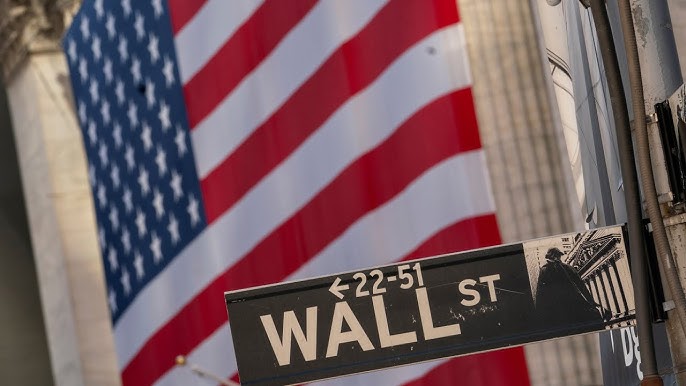The U.S. bond market—long considered the bedrock of global financial stability—is sending shockwaves through economies and boardrooms worldwide.
Yields on long-dated Treasurys have surged, market liquidity is thinning, and institutional investors are growing uneasy. Is this a momentary blip, or are we witnessing the beginning of a structural reckoning?
Analysts and financial leaders are split—but all agree on one thing: what’s unfolding in the U.S. bond market has serious implications for global finance.
1. What’s Happening in the U.S. Bond Market?
Yields on 10-year and 30-year U.S. Treasury notes have risen sharply in recent weeks, with the 30-year yield briefly breaching 5%, levels not seen since before the 2008 financial crisis. While rising yields can reflect optimism about economic growth, this particular spike is being driven by more unsettling factors:
-
Decreased demand for Treasurys, especially from foreign central banks and institutional investors.
-
Investor fears around persistently high inflation and further interest rate hikes by the Federal Reserve.
-
Ballooning U.S. fiscal deficits, which are raising questions about the long-term sustainability of government borrowing.
These developments are causing bond prices to plunge—because bond prices and yields move in opposite directions—and shaking the broader financial ecosystem.
2. What Are Analysts and Financial Leaders Saying?
Jamie Dimon, CEO, JPMorgan Chase
Dimon has been particularly vocal, warning that regulatory constraints such as the Supplementary Leverage Ratio are preventing large banks from stepping in as buyers during turbulent times. “If we don’t fix the regulatory framework,” Dimon said, “the Fed might have to step in to restore order.”
He emphasizes that the current structure disincentivizes banks from absorbing Treasurys when they’re needed most, worsening volatility in times of stress.
Jim Bianco, Bianco Research
Bianco went further, calling the market “broken.” In his view, we are not just seeing a market correction but signs of a deeper crisis of confidence in U.S. debt. “This isn’t just about yields—it’s about a broader debt crisis brewing in slow motion,” he warned.
Dan Ivascyn, Chief Investment Officer, PIMCO
Taking a more moderate tone, Ivascyn argues that the sell-off, while dramatic, has remained “orderly” so far. He believes the market is adjusting to new economic realities, including tighter monetary policy and rising long-term inflation expectations.
Scott Bessent, U.S. Treasury Secretary
In what some saw as a veiled warning, Bessent described the sell-off as “deleveraging convulsions,” driven by trade tensions and stock market weakness. He cautioned that if left unchecked, these developments could spiral into a broader financial crisis.
3. Why It Matters: Implications for the Global Economy
The U.S. bond market isn’t just a domestic concern—it’s the foundation of global capital markets. Here’s why this turmoil matters:
-
Higher Borrowing Costs: As yields spike, interest rates on mortgages, corporate debt, and consumer loans rise too, putting pressure on businesses and households.
-
Stock Market Volatility: Bond market stress often spills into equities, as rising yields make stocks less attractive and signal tighter financial conditions ahead.
-
Dollar Strength and Emerging Markets: A stronger dollar (often a result of higher U.S. yields) puts pressure on emerging markets, especially those with dollar-denominated debt.
4. Structural or Cyclical? The Core Debate
This is where the split in expert opinion lies:
The Structural View:
Analysts like Bianco argue that the U.S. is on an unsustainable fiscal path. With debt-to-GDP ratios soaring and no political consensus on deficit reduction, the market is beginning to question the long-term credibility of U.S. debt. If that trust erodes, it could trigger a systemic crisis akin to what we saw in the U.K. during the 2022 gilts panic.
The Cyclical View:
Others, like Ivascyn, see this as a normal, if painful, adjustment. The Fed has signaled higher-for-longer rates, and markets are recalibrating. Once inflation cools and rate hikes pause, stability could return.
5. What Should Investors Do Now?
Whether this is a short-term shake-up or a long-term shift, investors need to be vigilant. Here are key strategies to consider:
-
Diversify fixed-income exposure: Short-duration bonds and inflation-protected securities can help mitigate risk.
-
Reassess equity allocations: High-rate environments can compress valuations, especially in tech and growth sectors.
-
Look beyond Treasurys: Consider quality corporate bonds or international sovereign debt with better risk-reward profiles.
-
Monitor Fed communications: Markets are hypersensitive to Fed signals—watch for any change in tone.
Conclusion: A Market at a Crossroads
The recent bond market turmoil is more than just noise—it’s a signal. Whether it’s a wake-up call for policymakers or a passing squall in a new economic era, the implications are profound.
As Jamie Dimon put it, “If we don’t fix what’s broken, we may be forced into more drastic interventions.”
For now, all eyes are on the Fed, the U.S. Congress, and the global investment community. One thing is clear: the old certainties about U.S. debt and its role as the world’s safe haven are being questioned in real time.
Also Read

